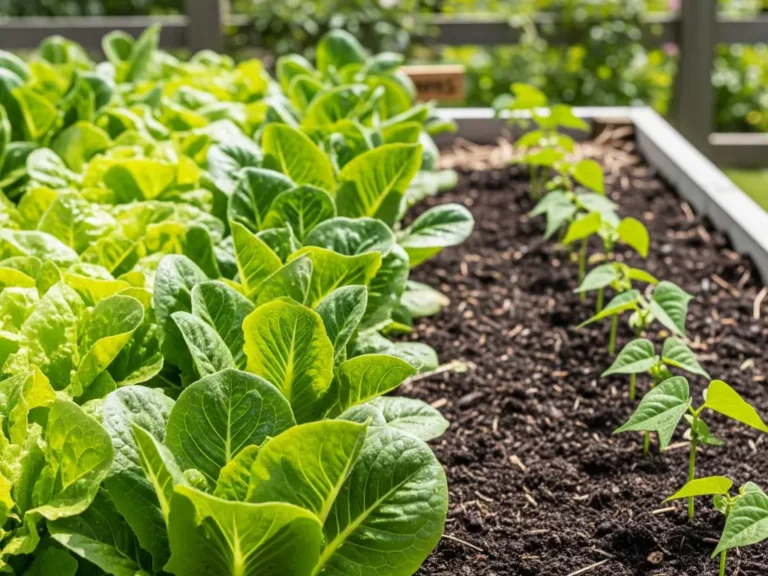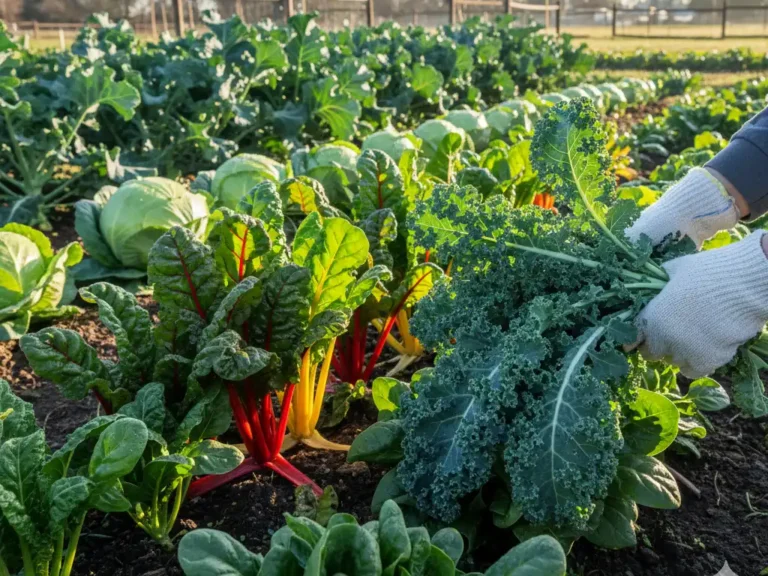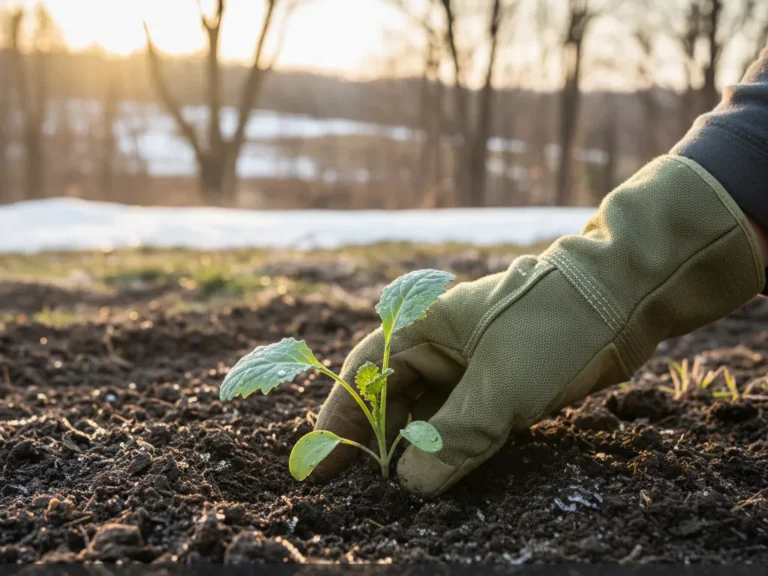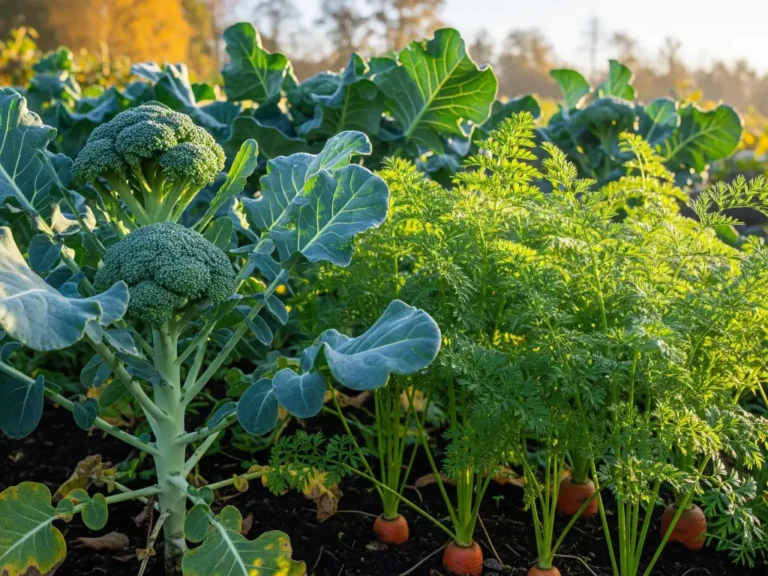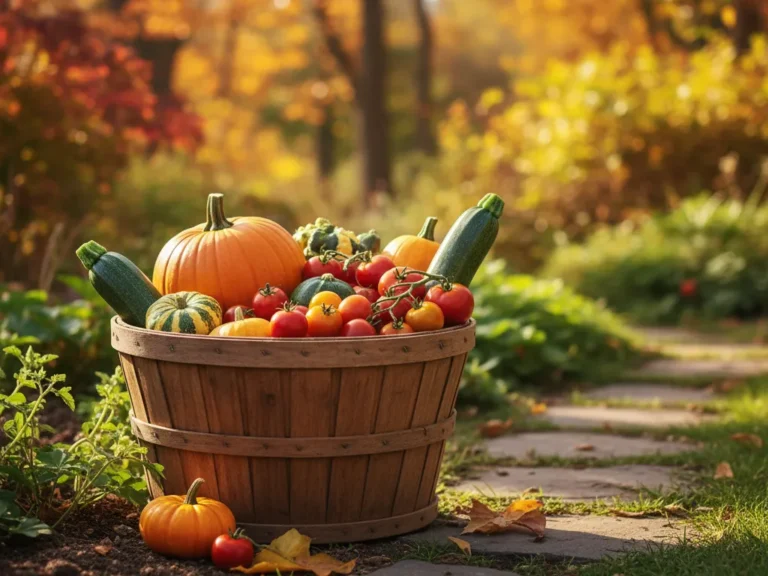Gardening in Zone 8 is a rewarding year-round pursuit, characterized by two primary growing seasons: spring and fall. The key to success is navigating the intense summer heat that divides them. This Zone 8 guide is your strategic tool for doing just that, offering two distinct timelines: an ‘Aggressive’ schedule for pushing the boundaries of the seasons, and a ‘Safe’ schedule designed to skillfully avoid the summer slump. Find the perfect dates for your gardening style below.
Key Dates for Zone 8
Understanding the frost patterns in your area is fundamental to successful gardening. Here are the key baseline dates I use to create your planting calendar, offering both an early-start (“Aggressive”) and a safer approach:
Spring Planting Baselines
- Aggressive Spring Planting Baseline: Mar 23rd
- Safe Spring Planting Baseline: Apr 5th
Fall Planting Baselines
- Aggressive Fall Planting Baseline: Nov 9th
- Safe Fall Planting Baseline: Oct 30th
Note: The “Aggressive” fall date is later because it aims to maximize the growing season, accepting a higher risk of an early frost.
The USDA Zone 8 Planting Calendar
This comprehensive calendar provides specific planting windows for a variety of common vegetables, taking into account both my Aggressive and Safe spring and fall planting baselines.
How to Use This Calendar
This calendar provides key planting dates for two gardening styles—Aggressive and Safe—to suit your tolerance for risk. The logic for spring and fall planting is different, so please read the descriptions below.
For Spring Planting:
- Safe: For gardeners who prefer a cautious approach. This means planting later to ensure minimal risk of frost damage to new seedlings from a late spring frost.
- Aggressive: For gardeners who want to get a head start. This involves planting earlier and being prepared to protect young plants from potential late frosts.
For Fall Planting:
Aggressive: For gardeners who want to maximize their harvest. This involves planting later to extend the growing season as long as possible, while being prepared to protect plants from an unexpected early frost.
Safe: For gardeners who prioritize a guaranteed harvest. This means planting earlier in the season to ensure crops are fully mature before the first frost of autumn arrives.
| Vegetable | Planting Method | Spring Planting (Aggressive) | Spring Planting (Safe) | Fall Planting (Aggressive) | Fall Planting (Safe) | Days to Harvest (days) | Notes |
| Radishes | Direct Sow Only | Feb 9 – Feb 23 | Feb 22 – Mar 8 | Sep 28 – Oct 12 | Sep 18 – Oct 2 | 21-35 | Cool-season crop; requires loose soil. For continuous harvest, sow every 1-2 weeks until weather warms. |
| Lettuce | Direct sow or start seeds indoors | Feb 23 – Mar 9 | Mar 8 – Mar 22 | Aug 31 – Sep 14 | Aug 21 – Sep 4 | 45−60 | For spring planting, you can direct sow on this date. To get a head start, start seeds indoors 3-4 weeks before this date for transplanting. |
| Bush Beans | Direct Sow Only | Mar 30 – Apr 6 | Apr 12 – Apr 19 | Aug 3 – Aug 17 | Jul 24 – Aug 7 | 50-60 | Warm-season crop; direct sow after frost. No support needed. |
| Zucchini | Direct Sow (recommended) | Mar 30 – Apr 6 | Apr 12 – Apr 19 | Aug 17 – Aug 31 | Aug 7 – Aug 21 | 45-60 | Dates are for direct sowing. For a head start in spring, start seeds indoors 2-4 weeks prior. |
| Tomatoes | Start indoors, then transplant | Mar 30 – Apr 6 | Apr 12 – Apr 19 | Aug 10 – Aug 25 | Jul 31 – Aug 15 | 50-90+ | Dates are for transplanting outdoors. Start seeds indoors 6-8 weeks prior. Fall planting requires short-season varieties. |
| Peas | Direct Sow Recommended (Can start indoors) | Feb 9 – Feb 23 | Feb 22 – Mar 8 | Aug 31 – Sep 14 | Aug 21 – Sep 4 | 55-70 | Frost-hardy: plant early & provide a trellis. Harvest daily to maximize yield before summer heat ends the season. |
| Spinach | Direct Sow (recommended) | Feb 9 – Feb 23 | Feb 22 – Mar 8 | Sep 14 – Sep 28 | Sep 4 – Sep 18 | 40-60 | Very cold-hardy; plant early. Keep soil moist to prevent bitterness. Harvest outer leaves for a continuous supply before summer heat arrives. |
| Kale | Direct sow or start seeds indoors | Feb 23 – Mar 9 | Mar 8 – Mar 22 | Aug 11 – Sep 10 | Aug 1 – Aug 31 | 55-75 | Very cold-hardy. Frost improves flavor, making fall harvests sweeter. Harvest outer leaves to allow the plant to keep producing. |
| Basil | Start Indoors or Direct Sow | Mar 30 – Apr 6 | Apr 12 – Apr 19 | Aug 17 – Aug 31 | Aug 7 – Aug 21 | 60-75 | Spring date is for transplanting; start seeds indoors 6-8 weeks prior. Fall date is for direct sowing. |
| Mint | Transplants or Cuttings | Mar 9 – Mar 23 | Mar 22 – Apr 5 | Sep 14 – Sep 28 | Sep 4 – Sep 18 | 30-40 | Dates are for transplants (not seed). Harvest continuously once established. |
| Garlic | Direct Sow Only | Jan 26 – Feb 23 | Feb 8 – Mar 8 | Sep 28 – Oct 12 | Sep 18 – Oct 2 | ~240 | Plant from cloves; harvest time shown is for fall planting. Fall planting recommended for largest bulbs. Choose Softneck varieties for mild winters. Spring planting yields smaller, often undivided bulbs. Zone 9 / very mild winters: Refrigerate cloves 6-8 weeks before planting. |
| Potatoes | Plant Seed Potatoes | Feb 9 – Feb 23 | Feb 22 – Mar 8 | Jul 20 – Aug 3 | Jul 10 – Jul 24 | 65-90+ | Two windows: spring (harvest before peak heat) & fall (often more productive). Fall planting requires sowing in late summer heat, so using mulch to keep soil cool is essential. |
| Onions | Transplants (Recommended) or Sets | Jan 12 – Feb 23 | Jan 25 – Mar 8 | Aug 31 – Sep 14 | Aug 21 – Sep 4 | 85-100 | Short-Day varieties.Spring dates refer to planting transplants in late winter. Fall dates are for direct seeding to overwinter for an early summer harvest. |
✔ Accuracy is my priority. The key planting dates in this calendar are calculated based on representative Aggressive and Safe frost date baselines established for each zone. Because your garden’s microclimate may vary, I strongly recommend that you verify your local frost dates for the most accurate timing. Learn My Methodology & Find a Frost Date Tool Here.
The Science Behind My Calendars
My calendars are built upon a rigorous, data-driven process. By analyzing historical frost data for several populous and representative cities within each USDA zone, I establish both an average and a conservative “safe” frost date. This ensures the planting windows you see here are both accurate and reliable.
To see the full list of cities and data points used in my research, please visit the My Research Data page. For a complete explanation of the calculation process, you can read about My Methodology.
Your Next Step: Learn How to Grow
Now that you know when to plant in Zone 8, the next step is learning how to grow each vegetable from seed to a successful harvest.
My complete guides provide detailed, step-by-step instructions for everything you’ll need. Explore the full library to turn this calendar into a thriving, productive garden.

